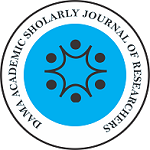Authors: 1Restie Rachmaningrum Sudjarwo, 2Windhu Purnomo, 3Hari Basuki Notobroto
1Master Student, Faculty of Public Health, Airlangga University, Indonesia
2,3Faculty of Public Health, Airlangga University, Indonesia
Abstract
Tuberculosis (TB) is a contagious infectious disease caused by Mycobacterium tuberculosis. Five countries in Southeast Asia are among the 22 countries with the highest number of TB cases in the world and Indonesia is ranked fifth. East Java is the province with the second highest number of TB cases after West Java. Jember became the district with the second highest number of tuberculosis sufferers in East Java, so prevention efforts are needed through a system approach that could establish the number of TB cases. This study used a system dynamic modeling to see the variables that could be suppressed to control TB case finding in Jember District. The initial modeling results had a MAPE validation value of less than 10%, so the model could be continued on the development model. Modeling development showed that reducing the number of new sufferers and preventing recurrence could reduce the number of TB cases in Jember District. The application of policies to improve new sufferers discovery for treatment as early as possible to thoroughly could improved TB cure rates and reduced recurrence rates. Improving environmental conditions would reduce the risk of contagion and incident of TB. TB control and eradication programs could be done through cross-program and cross-sectors cooperation and also community empowerment in environmental improvement efforts that would reduce the risk of TB transmission.
Keywords: tuberculosis, system dynamic modeling, Jember district

